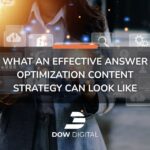The difference between a 2% and 8% click-through rate often comes down to a single design decision. While many businesses focus heavily on targeting and messaging, the visual elements of their campaigns frequently determine whether prospects engage or scroll past. Strategic graphic designing doesn’t just make campaigns look professional—it creates measurable improvements in click-through rates and conversions.
Companies that treat visual design as an afterthought miss significant opportunities to improve campaign performance. Every color choice, button placement, and visual hierarchy decision influences user behavior in ways that directly impact your bottom line. The most successful campaigns combine compelling messaging with graphics strategically designed to guide users toward conversion.
Understanding how design elements affect user behavior allows you to make informed decisions that improve campaign performance. Rather than relying on generic templates or gut feelings about what looks good, you can leverage proven design principles and real performance data to create graphics that consistently drive better results.
The Data Behind Visual Performance
A/B testing reveals significant performance differences between seemingly minor design variations. Companies testing different creative approaches often see click-through rate improvements ranging from 15% to 150% based solely on graphic designing changes. These improvements compound over time, creating substantial differences in lead generation and revenue.
Heatmap analysis provides additional insights into how users interact with different visual elements. Eye-tracking studies show that users typically scan content in predictable patterns, spending most of their attention on specific areas of the screen. Strategic placement of key elements within these high-attention zones can dramatically improve engagement rates.
Color psychology research demonstrates measurable impacts on user behavior. Red buttons typically generate higher click-through rates than blue buttons, while green buttons often perform best for confirmation actions. However, context matters significantly—the same color that improves performance in one industry might decrease it in another.
Strategic CTA Placement and Design
Call-to-action placement decisions can make or break campaign performance. Testing different CTA positions reveals that buttons placed above the fold typically outperform those requiring scrolling, but the specific optimal placement varies based on content length and user intent.
Button Design Elements That Drive Clicks
Button design elements including size, color, and surrounding whitespace all influence click-through rates. Larger buttons generally perform better up to a point, but oversized CTAs can appear pushy and decrease conversions. The key lies in finding the balance that feels natural while still drawing appropriate attention.
Contrast plays a crucial role in CTA effectiveness. Buttons that stand out from surrounding elements without clashing with the overall design aesthetic typically achieve the best results. This requires careful consideration of color schemes and strategic use of contrasting elements to guide user attention.
Visual Hierarchy That Guides User Behavior
Effective visual hierarchy uses size, color, and positioning to direct user attention through content in a logical sequence. Users should encounter information in the order that builds the strongest case for conversion, with supporting details arranged to reinforce rather than distract from the primary message.
Typography choices significantly impact both readability and conversion rates. Header fonts that are too decorative can reduce readability, while body text that’s too small creates barriers to engagement. The most effective campaigns use font combinations that enhance rather than compete with the core message.
Whitespace utilization affects how users process information and influences their emotional response to content. Cramped designs create cognitive overload that reduces conversion rates, while appropriate spacing makes content feel more premium and trustworthy.
Color Psychology and Conversion Optimization
Different colors trigger specific emotional responses that influence purchasing decisions. Blue conveys trust and stability, making it effective for financial services and B2B companies. Orange creates urgency and excitement, often improving performance for limited-time offers and consumer products.
Cultural context affects color perception and campaign performance. Colors that work well for one demographic might perform poorly for another. Global campaigns require careful consideration of how color choices will be perceived across different markets and cultural backgrounds.
Testing Color Variations for Your Audience
Testing color variations provides concrete data about what resonates with your specific audience. Rather than relying on general color psychology principles, successful companies test different approaches to identify what works best for their particular market and value proposition.
The most effective testing approach involves changing only one color element at a time. This might mean testing different CTA button colors while keeping all other design elements constant, allowing you to isolate the impact of that specific change.
Mobile-First Design Considerations
Mobile users interact with content differently than desktop users, requiring design approaches optimized for smaller screens and touch interfaces. Buttons need adequate spacing to prevent accidental clicks, while text must remain readable without zooming.
Load speed becomes even more critical for mobile campaigns. Graphics that look impressive on desktop might create unacceptable load times on mobile devices, significantly impacting conversion rates. Optimizing image files and using appropriate formats ensures consistent performance across devices.
Touch-friendly design principles improve mobile conversion rates. Elements sized for easy tapping, logical navigation flows, and forms optimized for mobile keyboards all contribute to better user experiences that translate into improved campaign performance.
Testing and Iteration Strategies
Systematic A/B testing reveals which design elements drive the strongest performance improvements. Testing single variables at a time provides clearer insights than testing multiple changes simultaneously, allowing you to identify exactly which modifications create better results.
Statistical significance requirements ensure test results represent genuine performance differences rather than random variation. Running tests for appropriate time periods and with sufficient traffic volumes prevents premature conclusions that could lead to counterproductive changes.
Building Your Testing Framework
Documentation of test results creates a knowledge base that informs future design decisions. Companies that maintain detailed records of what works and what doesn’t can avoid repeating unsuccessful approaches while building on proven strategies.
Start by identifying the highest-impact elements to test first. CTA buttons, headlines, and hero images typically offer the greatest potential for improvement. Once you’ve optimized these primary elements, you can move on to secondary design components.
Integration with Overall Marketing Strategy
Visual design consistency across all marketing channels reinforces brand recognition and builds trust with prospects. When graphics align with your overall brand identity while being optimized for conversion, you create campaigns that feel cohesive and professional.
Message alignment ensures visual elements support rather than distract from core value propositions. The most effective campaigns use graphics that enhance and clarify key messages rather than simply adding visual interest.
Measuring Success Beyond Click-Through Rates
While click-through rates provide important feedback about initial engagement, conversion tracking reveals whether design changes actually improve business outcomes. Some design elements that increase clicks might decrease conversion rates, making comprehensive measurement essential.
Quality score improvements in platforms like Google Ads often result from better-designed landing pages and ad creative. These improvements reduce advertising costs while improving ad positions, creating compound benefits from strategic graphic designing investments.
Long-term performance trends help identify sustainable improvements versus temporary fluctuations. Design changes that create lasting performance improvements typically indicate genuine user experience enhancements rather than novelty effects.
Transform Your Campaign Performance Through Strategic Design
Strategic graphic designing represents one of the most controllable factors affecting campaign performance. While you can’t control market conditions or competitor actions, you can systematically improve how your campaigns look and function.
Choosing Dow Digital means partnering with a firm that’s entirely committed to your success. Our team cares about the smallest details—like graphic design—because we understand how these elements compound to create significant performance improvements. From our revenue-based pricing model to our customized strategies, every element of our approach is designed with one goal in mind: helping you achieve measurable growth.
Start by auditing your current campaigns to identify design elements that might be limiting performance. Small changes often produce significant improvements, and systematic testing reveals which modifications deliver the strongest return on investment for your specific audience and industry.






